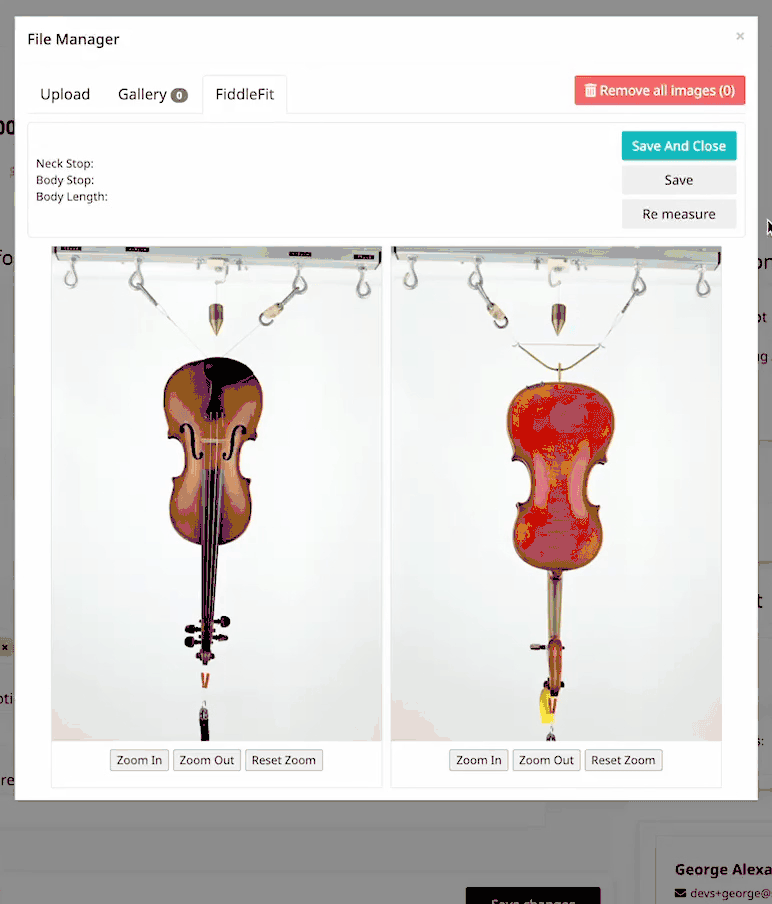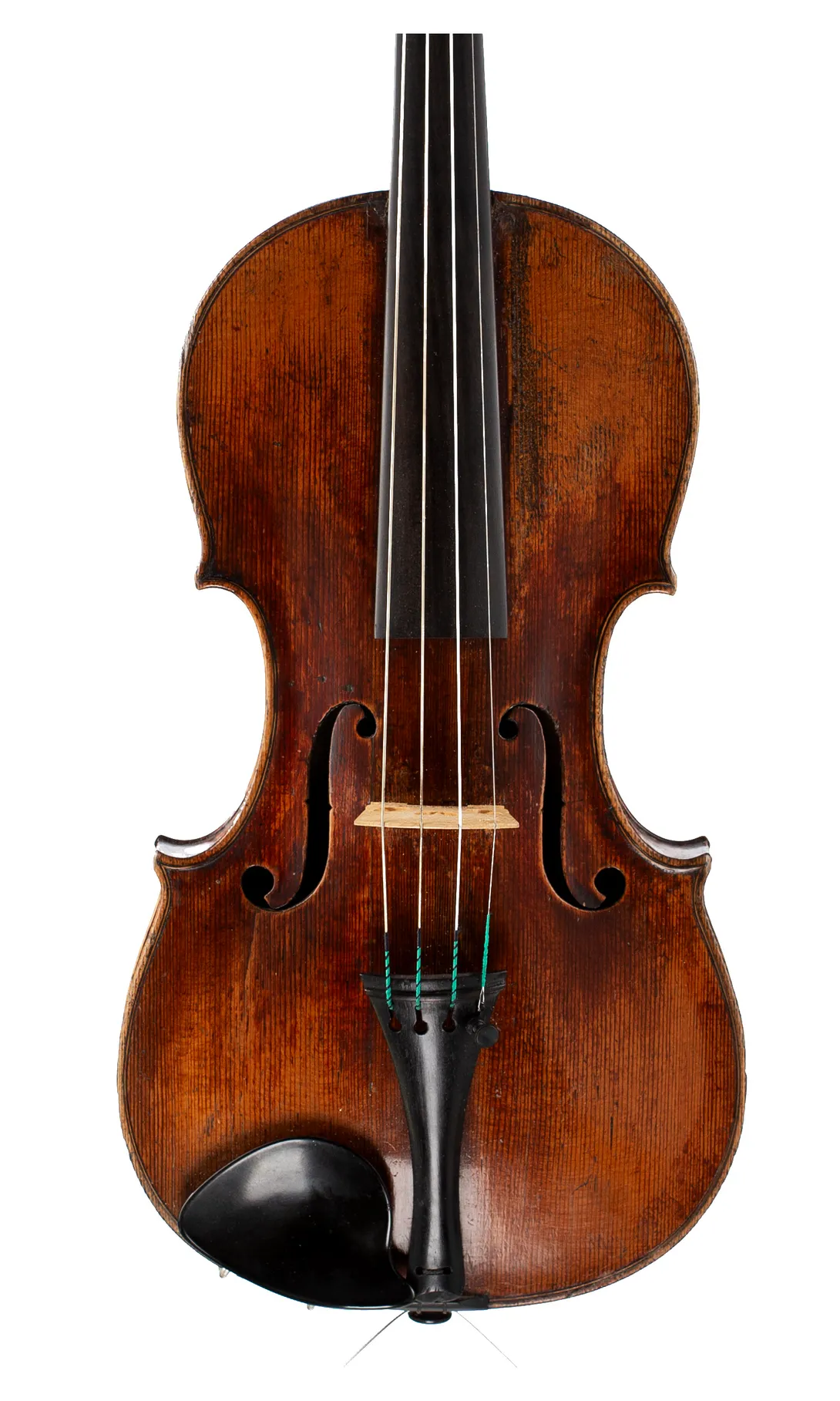Cunningness.
This is going to be a blog post of multiple parts. My part (it is my blog so I get to go first) is waffly, but simple.
All great things are invented by the lazy. I go one stage further. I am lucky enough to be lazy man with brainy colleagues.
Every auction we host has roughly 150 violins and cellos in. Each instrument requires three measurements and they are a real bore to get through. There is also the inevitability of human error and frankly, I think that whoever is cataloguing should focus on the important stuff. The job title I hold of which I am most proud is as self-appointed Chief Executive Morale and I like to spend time bringing joy and happiness to the office. When that doesn’t work, I give them the even greater pleasure of my leaving. In either case there isn’t much room for 11,500 odd measurements.
Anyway, I am old and I don’t want to do it.
And this is where my little nest of geniuses (genii?)comes in. I know one person, huge brain, but I won’t name-check him here because he is currently employed at a large pharmaceutical firm, using AI photo recognition to track the development of spores in Petri dishes. This is through the looking-glass stuff for me and makes me feel old, but bear with me.
This chap created an algorithm – and has spent the last year tweaking and invoicing us on a regular basis. It is now ready to go.
Then we have Amal. We are lucky we have Amal and I believe the only reason we do have Amal is that Google haven’t yet discovered him. Amal has taken the algorithm and created a juicy little program (I assume, using lots of ones and zeros) which operates via an API with our main auction system (Snoofa). Snoofa is run by Tony, and the only reason Google haven’t employed Tony is that we burn all the letters they have sent to him before he gets them.
And the end result is that the camera, the algorithm and the API all do the work that would have taken me days to achieve by hand. It is a work in progress and we shall be monitoring the output ruthlessly over the next few months. Feedback welcome.
The sharp eyed amongst you will have recognised the genius potential of the system. If back-length, neck and stop length are feasible, then why not other aspects of the violin? As this is on the road map, please watch this space.
Amal’s notes on the integration:
I was tasked with integrating FiddleFit with Snoofa. The AI component is a Python FastAPI REST endpoint, while Snoofa is built with PHP and Vue.
Images are uploaded in Snoofa, sent to FiddleFit, which then provides values such as Neck Stop, Body Stop, and Body Length. The QA team tests these values using the FiddleFit UI.
The Vue.js component we used for FiddleFit UI is open-sourced and available at Snoofa’s GitHub: https://github.com/snoofa-com/vue-plotting-ui-lib .
Here’s a short screen recording showing FiddleFit in action:

Our next steps include enhancing the user experience and speeding up the process.
This comment from our QA engineer Paul makes all this worth it: “1 day of measuring by hand can probably be QA checked in 1 hour using this system.”
Paul’s notes on the integration:
This system is truly remarkable! The algorithm accurately calculates the key measurements of the instruments and feeds them directly into the auction listings. The intuitive UI enables the team to carry out detailed QA monitoring and adjustments with ease.
With FiddleFit, measurements of instruments can now be recorded without manual intervention and with only minimal data cross-checking required. This system removes the errors associated with manual measurements whilst simultaneously saving time and resources.
FiddleFit is a powerful tool which can be adapted for many different applications. What you see here is just the beginning.



